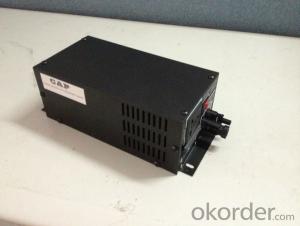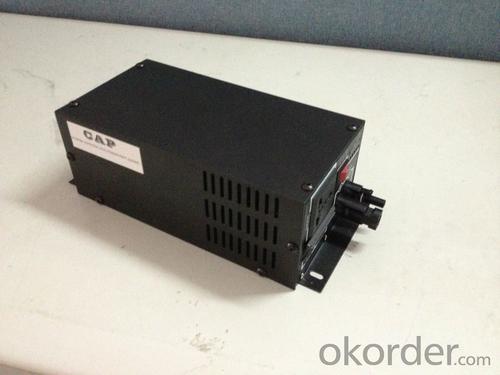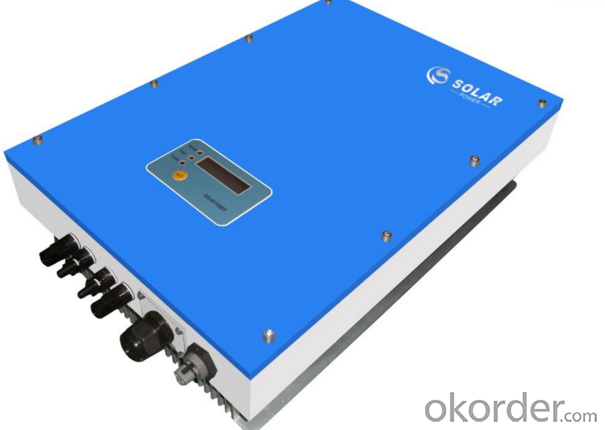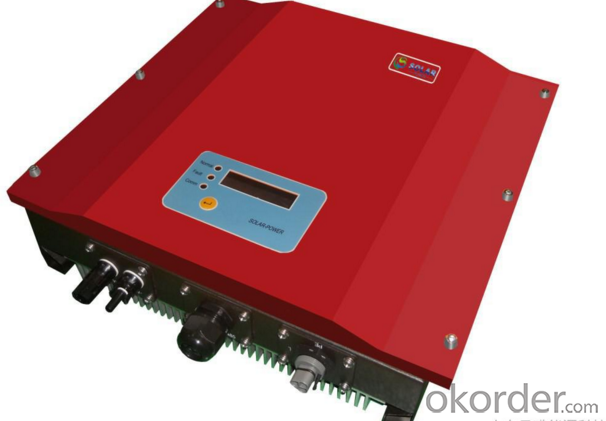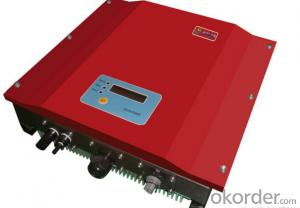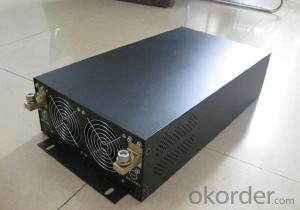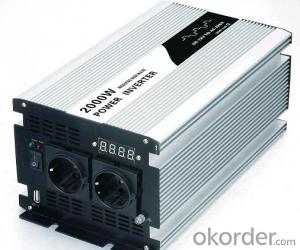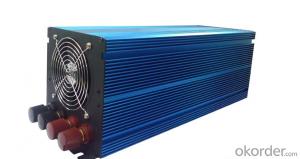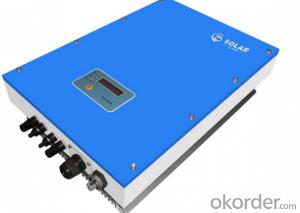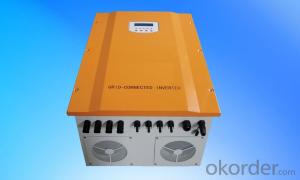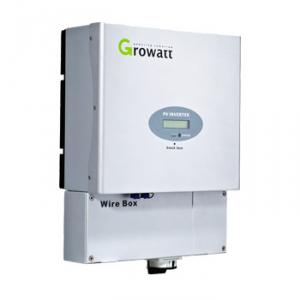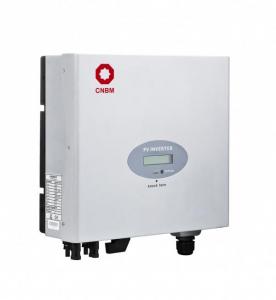Solar Inverter Amazon - Three Phase 17k Solar Inverter Made in China
- Loading Port:
- Shanghai
- Payment Terms:
- TT OR LC
- Min Order Qty:
- 0 watt
- Supply Capability:
- 10000 watt/month
OKorder Service Pledge
OKorder Financial Service
You Might Also Like
Description of Three Phase 17k Solar Inverter
Solar ac power system consists of solar panels, charge controllers, inverter and battery; Solar energy does not include inverter dc power system. Inverter is a kind of power conversion device, inverter by incentives can be divided into self-excited oscillation inverter and separately excited oscillation inverter.
Features of Three Phase 17k Solar Inverter
Including three series,7 models
Both economical and high effciency
Smaller and lighter, 20Kw-TL weighs only 45kg
External Inductor
LCD screen with four buttons
Ethernet wifi or GPRS cascade data communication technology
User, installer, distrbutor, Omnik headquarter all-round remote control
Meets VDE-AR-N4105,BDEW approval
Built-in lightning protection module as an option
Advantages of Three Phase 17k Solar Inverter
Meets all the needs of medium power three phase inverter
Economy, high reliability and long life circle
Convenient to transport and install
Reducing machine temperature, extends device lifetime
Easy to operate, user friendly
One power station needs only one monitoring equipment
Real-time operation condition accessible, fast fault responding speed
Adjustable active and reactive power
Built-in lighting protection module
Technical Data of Three Phase 17k Solar Inverter
| Type | Omniksol-17k-TL |
| Input(DC) | |
| Max.PV Power | 17600W |
| Max,DC Voltage | 1000V |
| Nominal DC Voltage | 640V |
| Operating MPPT Voltage Range | 250-800V |
| MPPT Voltage Range at Nominal Power | 440-800V |
| Start up DC Voltage | 300V |
| Turn off DC Voltage | 250V |
| Max, DC Current(A/B) | 22A/22A |
| Max, Short Cicuit Current for each MPPT | 25A/25A |
| Number of MPP trackers | 2 |
| Max, Input Power for each MPPT* | 5000W |
| Number of DC Connection | A:3/B:3 |
| DC Connection Type | MC4 connector |
| Output(AC) | |
| Max,AC Apparent Power | 17000VA |
| Nominal AC Power (cos phi = 1) | 17000W |
| Nominal AC Voltage | 3/N/PE;220/380V |
| 3/N/PE;230/400V | |
| 3/N/PE;240/415V | |
| Nominal Grid Frequency | 50Hz/60Hz |
| Max, AC Current | 26.0A |
| Grid Voltage Range** | 185-276V |
| Grid Frequency Range** | 45-55Hz/55-65Hz |
| Power Factor | 0.9 capacitive... 0.9 inductive |
| Total Harmonic Distortion(THD) | <2% |
| Feed in Starting Power | 60W |
| Night time Power Consumption | <1W |
| Standby Consumption | <12W |
| AC Connection Type | Plug-in connertor |
| Efficiency | |
| Max,Efficiency | 98.1% |
| Euro Efficiency | 97.6% |
| MPPT Efficiency | 99.9% |
| Safety and Protection | |
| DC Insulation Monitoring | Yes |
| DC Switch | Optional |
| Residual Current Monitoring Unit (RCMU) | Integrated |
| Grid Monitoring with Anti-islanding | Yes |
| Electricity Fuse Protection | Yes |
| Protection Class | Ⅰ(According to IEC 62103) |
| Overvoltage Category | PV Ⅱ/ Mains Ⅲ(According to IEC 62109-1) |
| Reference Standard | |
| Safety Standard | EN 62109, AS/NZS 3100 |
| EMC Standard | EN 6100-6-1, EN 6100-6-2, EN 6100-6-3 EN 6100-6-4, EN 6100-3-2, EN 6100-3-3 |
| Grid Standard | VDE-AR-N4105. VDE-0126-1-1,G83/1,EN 50438,RD1699,CEI 0-21, AS4777,C10/C11 |
| Physical Structure | |
| Dimensions | 575x650x248mm |
| Weight | 45kg |
| Environmental Protection Rating | IP 65 (According to IEC 60529) |
| Cooling Concept | Natural convection |
| Mounting Information | Wall bracket |
| General Data | |
| Operating Temperature Range | -25℃ to +60℃(derating above 45℃) |
| Relative Humidity | 0% to 98%, no condensation |
| Max. Altitude (above sea level) | 2000m |
| Noise Type | <45dB |
| Isolation Type | Transformerless |
| Display | TFT Graphic Display |
| Data Communication | RS485(WiFi, GRPS optional) |
| Computer Communication | RS485(USB) |
| Standard Warranty | 10 Years (5-15 years optional) |
IMages of Three Phase 17k Solar Inverter
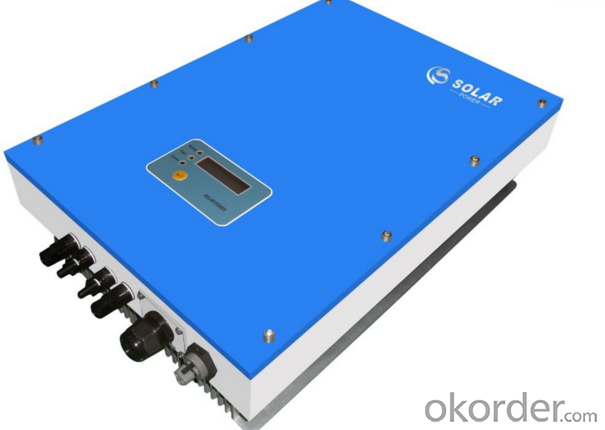
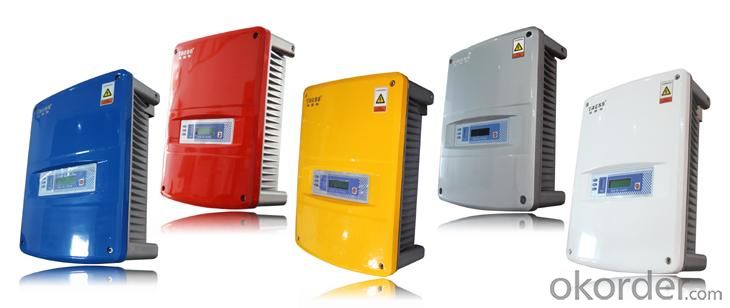
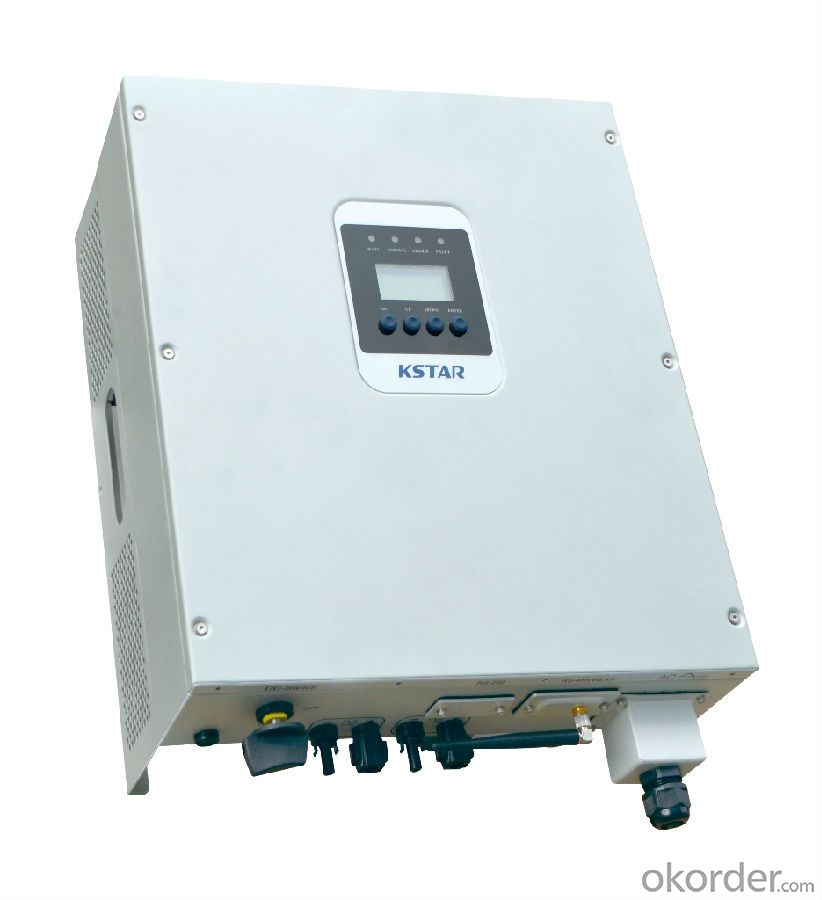
FAQ
Q: Do you have the CE, TUV, UL Certification?
A: We’ve already passed all the tests, and any certificate is available.
Q: Have you ever sold your products to companies in my country?
A: Of course, we have customers in all general PV markets, but I think we should expand our market share along with the market growth.
Q: When did your company set up? You are a new company, how can I believe your quality?
A: We entered into Solar PV industry in 2005, now we have several plants in manufacturing of a-Si and c-Si panels, and our capacity is 220MW per year. Till now we have already passed all the tests by authorized laboratories, e.g. TUV, CE, UL.
Q: Can you help us install the module if we cooperate with you?
A: We haven’t entered into installation sector, but we have the plan in near future.
Q: How do you pack your products?
A: We have rich experience on how to pack the panels to make sure the safety on shipment when it arrives at the destination.
Q: Can you do OEM for us?
A: Yes, we can.
Q: Can we visit your factory?
A: Surely, I will arrange the trip basing on your business schedule.
- Q: How does a solar inverter handle voltage and frequency variations caused by switching operations?
- A solar inverter is designed to handle voltage and frequency variations caused by switching operations through its built-in control mechanisms and advanced technology. When a solar inverter is connected to the grid, it monitors the voltage and frequency of the grid and adjusts its operation accordingly to maintain stability and safety. In the case of voltage variations caused by switching operations, a solar inverter typically employs a voltage control mechanism. This mechanism continuously monitors the voltage level of the grid and adjusts the output voltage of the inverter to match the grid voltage. If the grid voltage rises or falls beyond a certain threshold, the inverter automatically adjusts its output voltage to compensate and maintain a stable voltage level. Similarly, for frequency variations caused by switching operations, a solar inverter utilizes a frequency control mechanism. This mechanism constantly monitors the grid frequency and adjusts the inverter's output frequency to match the grid frequency. If the grid frequency deviates from the standard frequency, the inverter can quickly respond by adjusting its output frequency to maintain synchronization with the grid. To achieve this level of control, solar inverters often incorporate advanced digital signal processing algorithms and sophisticated control systems. These algorithms and control systems analyze the voltage and frequency signals from the grid, and based on predefined parameters, make rapid adjustments to the inverter's output to ensure compatibility with the grid. Ultimately, the goal of a solar inverter is to seamlessly integrate with the grid and provide a stable, reliable, and efficient power supply. By effectively handling voltage and frequency variations caused by switching operations, the inverter contributes to the overall stability and resilience of the grid, allowing for optimal utilization of solar energy and promoting a sustainable energy future.
- Q: How does a solar inverter handle voltage drop?
- A solar inverter handles voltage drop by continuously monitoring the voltage levels from the solar panels. It adjusts its output voltage accordingly to ensure that the electricity being produced is compatible with the grid or the appliances it is connected to. This helps to compensate for any voltage drop that may occur due to factors such as distance, resistance, or shading, thereby maintaining a consistent and stable power supply.
- Q: Can a solar inverter be used with a solar-powered swimming pool heater?
- Yes, a solar inverter can be used with a solar-powered swimming pool heater. A solar inverter converts the direct current (DC) produced by the solar panels into alternating current (AC) that is compatible with household appliances and equipment. Since a solar-powered swimming pool heater also relies on solar panels to generate electricity, the solar inverter can be used to convert the DC power from the panels into the AC power required to operate the heater.
- Q: Can a solar inverter be integrated with smart home systems?
- Yes, a solar inverter can be integrated with smart home systems. Smart home systems are designed to connect and control various devices in the home, including solar inverters. By integrating a solar inverter with a smart home system, homeowners can monitor and control their solar energy production, consumption, and storage, as well as optimize energy usage based on real-time data. This integration allows for greater efficiency, convenience, and cost savings in managing solar power within a smart home ecosystem.
- Q: Can a solar inverter be used with solar-powered remote sensing systems?
- Yes, a solar inverter can be used with solar-powered remote sensing systems. A solar inverter is responsible for converting the direct current (DC) produced by solar panels into alternating current (AC) that can be used to power electrical devices. In the case of solar-powered remote sensing systems, the solar inverter plays a crucial role in converting the DC power generated by the solar panels into AC power to operate the sensing equipment. This ensures the efficient utilization of solar energy in powering remote sensing systems.
- Q: What is the role of a solar inverter in a battery storage system?
- The role of a solar inverter in a battery storage system is to convert the direct current (DC) electricity generated by solar panels into alternating current (AC) electricity that can be used to power homes or businesses. It also manages the charging and discharging of the batteries, ensuring efficient storage of excess energy generated by the solar panels and providing a reliable power supply during periods of low solar generation or power outages.
- Q: How does the maximum AC current rating affect the performance of a solar inverter?
- The maximum AC current rating of a solar inverter directly impacts its performance. If the inverter has a higher maximum AC current rating, it can handle a larger amount of current flowing through it. This means it can support a higher capacity of solar panels and generate more power. On the other hand, if the inverter has a lower maximum AC current rating, it may not be able to handle high currents and can lead to inefficiencies or even system failures. Therefore, selecting an inverter with an appropriate maximum AC current rating is crucial for ensuring optimal performance and reliability of the solar power system.
- Q: What is the role of galvanic isolation in a solar inverter?
- The role of galvanic isolation in a solar inverter is to provide electrical safety by separating the input and output circuits, preventing any direct electrical connection between them. This isolation helps protect the solar panels, the inverter, and the connected grid from potential electrical faults, such as ground faults or voltage surges. It also reduces the risk of electric shock and improves the overall performance and reliability of the solar inverter system.
- Q: What is the lifespan of a solar inverter?
- The lifespan of a solar inverter typically ranges from 10 to 20 years, depending on various factors such as the quality of the inverter, usage patterns, maintenance, and environmental conditions.
- Q: Can a solar inverter be used with solar-powered signage systems?
- Yes, a solar inverter can be used with solar-powered signage systems. A solar inverter is responsible for converting the direct current (DC) produced by the solar panels into alternating current (AC) that can be used to power electrical devices. Since solar-powered signage systems also require AC power to operate, a solar inverter is necessary to ensure compatibility and efficient energy conversion.
Send your message to us
Solar Inverter Amazon - Three Phase 17k Solar Inverter Made in China
- Loading Port:
- Shanghai
- Payment Terms:
- TT OR LC
- Min Order Qty:
- 0 watt
- Supply Capability:
- 10000 watt/month
OKorder Service Pledge
OKorder Financial Service
Similar products
Hot products
Hot Searches
Related keywords
